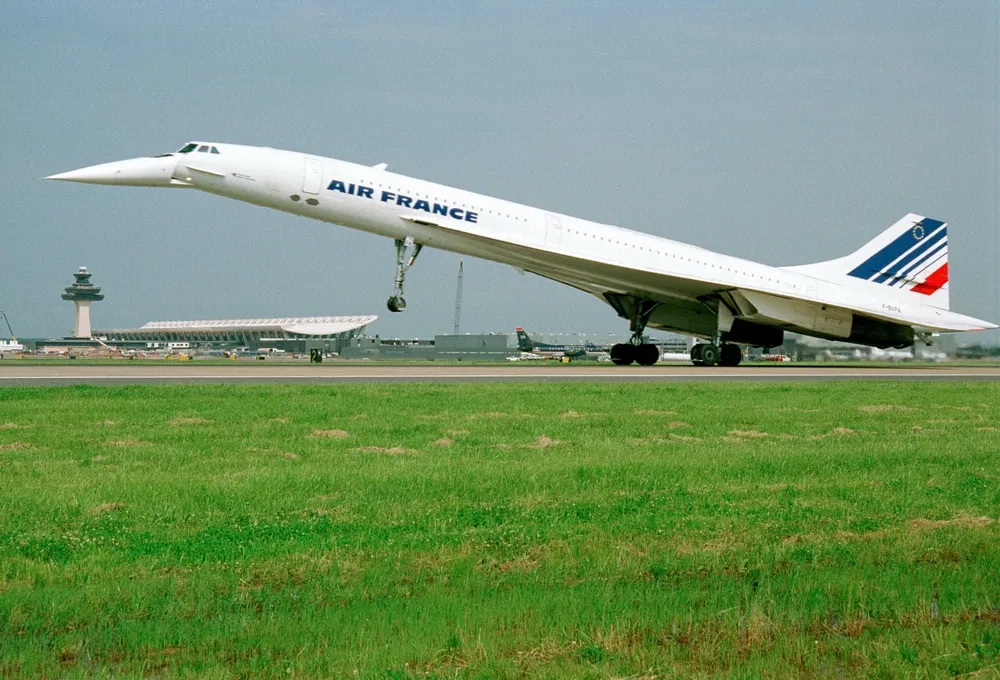NASA Aims to Build a Quiet SST
The space agency launches its first piloted X-plane program in many years.
/https://tf-cmsv2-smithsonianmag-media.s3.amazonaws.com/filer/df/e3/dfe3a5b3-b7c1-42ae-9ac8-052ce57fbf2f/sst2.jpg)
NASA announced this week that it will build a new piloted experimental airplane, its first in many years, to figure out how to break the sound barrier quietly.
The supersonic demonstrator, dubbed Quiet SuperSonic Technology (QueSST), will start with a detailed design by aerospace behemoth Lockheed Martin under a $20 million NASA contract. The design phase will last approximately 17 months, followed by another competition to actually build the aircraft, with a first flight expected in the early 2020s.
“Several years down the road, [it will] start flying over Chicago [and] Los Angeles,” said Jaiwon Shin, the head of NASA’s aeronautics directorate. “And hopefully people [won’t] hear, or even know, that a supersonic airplane flew by over their heads.”
Sonic booms are created when an aircraft exceeds the speed of sound, creating a pressure wave that spreads in the aircraft’s wake. People on the ground hear it as a resounding crack or boom. Though generally little more than a noisy nuisance, more forceful sonic booms can rattle or even shatter windows.
Chuck Yeager famously became the first person to break the sound barrier in the Bell X-1 (now hanging from the ceiling at the National Air & Space Museum) on October 14, 1947, and aircraft companies all over the world immediately began designing their own supersonic aircraft. But the accompanying sonic boom often was an annoyance to those below, and the United States eventually prohibited most supersonic flight over land, effectively ending civilian supersonic programs. The only survivor, the British-French Concorde (14 of which were built), flew mainly over the Atlantic Ocean so as to keep the noise down (though people living in coastal areas often heard a sonic boom anyway). Between the noise restrictions and the cost of operating such an exotic aircraft, commercial supersonic travel completely disappeared with the Concorde’s retirement.

The military is exempt from restrictions on supersonic flight, but only in tightly defined corridors, purposely drawn to avoid heavily populated areas. Modern commercial and private aircraft have to stay subsonic, meaning that a cross-country flight still takes five or six hours. But the dream of faster flight has never gone away. Concepts for new supersonic airplanes (mostly business jets, whose customers may be more willing to bear the high cost of supersonic flight) make the news every few years. Without the ability to fly over land, however, they have always been seen as commercially impractical.
NASA scientists have long suspected that with the right airplane shape, a sonic boom could be quieted. The Shaped Sonic Boom Demonstration, a heavily modified Northrop F-5 with a lengthened nose and bulbous underside, flew in 2003 and reduced the noise from sonic booms by about a third. Quiet Spike, a 2007 follow-up experiment with business jet manufacturer Gulfstream as a partner, attached a long, specially-shaped probe to the nose of a NASA F-15. That experiment, too, was successful in cutting sonic booms.
The newly announced program, QueSST, will be the biggest attempt yet to dampen sonic boom noise. Rather than modify an existing aircraft, the QueSST researchers will build a clean-sheet airplane for this purpose alone.
The White House budget request for next year includes $790 million for NASA aeronautics research, providing a major boost to what many believe has been an underfunded program, where agency-funded scientists frequently come up with innovative and interesting designs, but rarely have the money to progress beyond computer simulations.
“I came to NASA to try and re-instill some vigor into the aeronautics budget, but every year, my first few years, [we had] to prioritize, and aeronautics just always stayed at the same level,” said NASA Administrator Charles Bolden in announcing the new SST research. The budget boost “was a long time coming,” he said.
/https://tf-cmsv2-smithsonianmag-media.s3.amazonaws.com/filer/af/e6/afe6473d-40f2-4ac3-87e7-4e513231c556/leaptech_demonstrator_concept.jpg)
QueSST is the first of what NASA hopes will be four or five new experimental aircraft, or X-planes, and the announcement was made against a backdrop of concept models and illustrations. Buoyed by the larger-than-usual 2017 budget request, NASA has already announced its intention to build a distributed electric propulsion test bed, replacing a Tecnam 2006T's two gas-burning engines with 14 small electric motors. Sometime in the near future the agency hopes to build one or more of its environmentally friendly concepts, like the Sugar Volt, for which rigorous computer modeling and wind tunnel experiments have already been completed.
It remains to be seen whether the proposed funding will be granted by Congress, but if QueSST survives and is successful, NASA could make a real contribution by removing one of the biggest barriers to supersonic travel. Some day, travel time between the continents may be a fraction of what it is today, and we might look back on QueSST as a turning point.